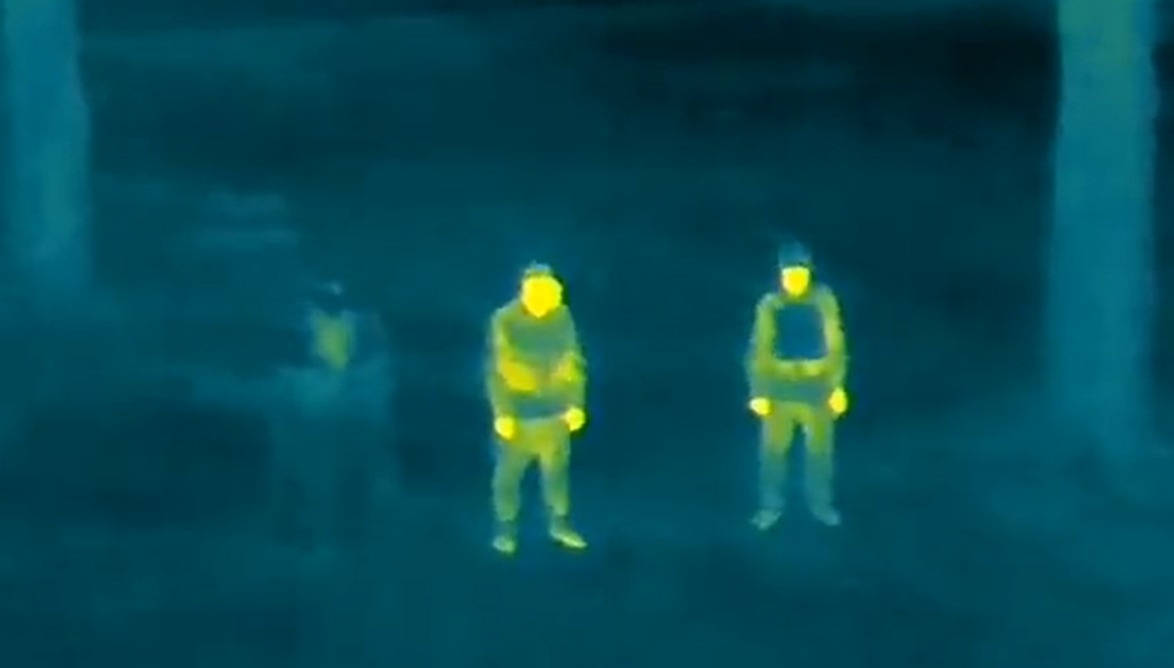Kyiv’s incursion into Russia’s Kursk region began on the night of August 5-6, when Ukrainian forces crossed near Sudzha. Ukrainian President Volodymyr Zelenskyy later confirmed the operation, stating its aim was to establish a “buffer zone” between the two nations. Russian President Vladimir Putin denounced the action as a “terrorist attack.”
More than two weeks into the operation, Russia continues to struggle to regain control over the Kursk region. This prolonged conflict has led to various explanations from the Russian side regarding Ukraine’s unexpected success.
The “Invisible” Soldier Narrative
One recent Russian narrative focuses on the idea of “Invisible” Ukrainian Soldiers.
According to Russian reports, Ukrainian forces have been provided with special uniforms from the West that render soldiers invisible both day and night. According to the Military Portal, Russians view this as part of an international conspiracy.
Western media, however, have dismissed these claims as propaganda. Critics argue that the substantial movement of military equipment into the Kursk region would be difficult to conceal completely.
ASTRA: India Targets ‘Russian Customers’ For Its Indigenous BVR Missiles; S.E Asia Top Export Market
Lt. Col. (Res.) Maciej Korowaj, a military intelligence officer and analyst for the Polish portal ‘Defence24’, noted on Platform X that “sounds travel far at night, and the noises of Ukrainian engines on the night of August 5-6 were clearly audible in the Sumy district”. He argued that, even if Ukrainians were using advanced camouflage, it would still be nearly impossible to conceal their presence near or within Russian territory.
ANALIZA SYTUACYJNA
"OPERACJA KURSKA SZU" I JEJ SKUTKI W ŚWIADOMOŚCI ROSJAN.
Uderzenie Sił Zbrojnych Ukrainy (SZU) na obwód kurski (nazywam to "operacją kurską") spowodowało znaczny wstrząs w rosyjskim społeczeństwie.
Cały establishment kremla pracuje w trybie "damage… pic.twitter.com/kqaFM2SSDL
— ppłk rez. Maciej Korowaj (@Maciej_Korowaj) August 20, 2024
Russia Alleges U.S. Mercenary Involvement
Before this, the Russian Foreign Ministry also alleged the involvement of U.S. private military companies in the fighting, as well as accusing American journalists of illegally entering Russian territory to report on the incursion.
Abrams MBT: Russian Military Says 1st US-Supplied Abrams Main Battle Tank Destroyed In Kursk Region
The Russian Foreign Ministry summoned Stephanie Holmes, Deputy Chief of Mission at the U.S. Embassy in Moscow, to convey their concerns. They informed her of the alleged participation of “American private military companies” in the fighting in Kursk Oblast.
The ministry also expressed its protest to Holmes, accusing American reporters of “provocative actions” by infiltrating Kursk Oblast illegally to produce propaganda reports on the activities of Kyiv’s regime.
Advanced Camouflage for Soldiers
While the concept of truly “invisible” soldiers remains in the realm of science fiction, the military industry has been developing advanced camouflage materials for some time.
These materials are designed to obscure military equipment or reduce personnel visibility by bending light around objects. They do not reflect visible, ultraviolet, infrared, or shortwave light, making them highly effective for camouflage. Additionally, they minimize thermal signatures, making it more challenging for the enemy to detect through night vision or remote sensing technologies.
F-16s “Sitting Ducks” For Russian MiG-31 Fighters? Putin Warns Of Consequences Over Fighting Falcons
Ukrainian Invisibility Cloak
In late 2023, Ukraine’s Minister of Digital Transformation, Mykhailo Fedorov, introduced a real-world application of advanced camouflage technology through ‘Telegram’. He showcased an ‘invisibility cloak’ designed to help Ukrainian soldiers evade detection by Russian thermal imaging, particularly from drones. Weighing just 2.5 kg, this cloak provides protection against various weather conditions and is made from non-flammable material, offering defense against rain, snow, and high temperatures. Fedorov credited this innovation to Brave1, a Ukrainian government initiative aimed at promoting battlefield technology advancements.
Have u ever read about invisibility cloaks in fairy tales? Well, Ukrainians made it. The cloak blocks heat radiation & makes defenders invisible to Russian thermal cameras. It will help our soldiers work effectively during the night. Miltech magic supported by @Brave1ua cluster. pic.twitter.com/7OIE4Ciq2c
— Mykhailo Fedorov (@FedorovMykhailo) October 4, 2023
By early October, Ukrainian developers reported to ‘Newsweek’ that a local team was already capable of producing 150 “invisibility cloaks” per month, with plans to scale up to mass production. These cloaks are specifically designed to shield Ukrainian soldiers from Russian thermal imaging technology.

Russian Camouflage Suit
In January 2024, Russia unveiled its own “camouflage suit” designed to conceal soldiers from Ukrainian forces, following Ukraine’s earlier development of lightweight “invisibility cloaks” for its troops. According to the state news agency Tass, Russia is developing the suit to provide “perfect protection against thermal imaging equipment” used by Ukrainian troops.
Russia Brings “Invisibility Suit” To Ukraine War: Will Protect Soldiers From Thermal Imaging Systems
Shadows Of War
The claims of “invisible” Ukrainian soldiers in the Kursk region underscore the complex interplay between military technology, propaganda, and the fog of war.
While advanced camouflage technologies exist, Ukraine’s achievements in the Kursk region could be likely due to superior tactics, intelligence, and possibly Western-supplied conventional equipment.
The “invisible soldier” narrative could be a means for Russian sources to account for unexpected Ukrainian successes without acknowledging their own tactical or strategic shortcomings.
But, these developments highlight the ongoing technological race in modern warfare, where advancements in camouflage and detection play crucial roles in military operations.
- Shubhangi Palve is a defense and aerospace journalist. Before joining the EurAsian Times, she worked for E.T. Prime. In this capacity, she focused on covering defense strategies and the defense sector from a financial perspective. She offers over 15 years of extensive experience in the media industry, spanning print, electronic, and online domains.
- Contact the author at shubhapalve (at) gmail (dot) com.




